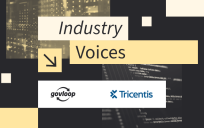While initiatives such as the Modernization Act and Cloud Smart aim to encourage agencies to transform, many agencies continue to face challenges. Modernization isn’t a once-and-done process. Rather, it’s a progressive initiative based on desired mission outcomes.
In a session at GovLoop’s recent Government Innovators Virtual Summit: Solving Your Agency’s Biggest Challenges, panelists discussed how successful agencies have found that data-driven strategies can help them navigate their complex IT landscapes and achieve modernization objectives, regardless of their environment whether on-premises, hybrid or cloud.
Panelists included Ashok Sankar, Director, Solutions Marketing, Splunk; Joanne Woytek, Program Manager, NASA SEWP Program; and Daryl Robbins, Senior Enterprise Cloud Architect, Entrust Datacard Corporation.
Top of mind for the panelists was talking about what are the real drivers for modernization – and how agencies are responding to them. Sankar noted that the federal government spends nearly 75 percent of its annual information technology funding on operating and maintaining existing legacy information technology systems. That’s why most agencies are attempting to modernize their IT infrastructures and systems to better support mission-critical functions.
Woytek runs the NASA SEWP program, which was created in 1993 with Office of Management and Budget authorization, and which was the federal government’s first government-wide acquisition contract. Originally called the Scientific and Engineering Workstation Procurement, the program’s name was broadened to Solutions for Enterprise-Wide Procurement in 2007. “It’s critical to modernize what you need to, where you need to, and not just because it’s a fancy word or you feel like you should,” she said.
While government has started to embrace IT modernization, Sankar said the outcome isn’t always totally clear, depending on the agency. Some are embracing modernization initiatives and consolidating legacy systems; some hope to gain granular visibility and insights into migrations and performance; some hope to improve efficiencies and deliver superior citizen experiences; and some want all of the above. But knowing the mission objective first before diving into modernization is critical, Sankar said. “This is a progressive journey that can take a long time,” he pointed out.
And the journey can be a tough one. In a poll conducted of the GovLoop audience during the webinar, when asked, “How well are your IT modernization efforts progressing?”, only 4.5% said better than expected. Thirty-seven percent said progress was going as expected, and 35.7% said “worse than expected – we have had many challenges that have put us behind schedule.”
So what are those agencies who are behind to do next? Robbins pointed out that in both the private and public sectors, the technology is rarely the issue at hand – it’s often a cultural or personnel issue that can prevent modernization progress. A clear, compelling roadmap created and articulated by thoughtful leadership is a critical step.
By ensuring that IT modernization is part of your agency’s overall strategy and emphasizing the link between better IT, better services, stronger cybersecurity and agency mission, your agency may be able to move forward more quickly. Define the compelling reason for why the change was needed, including current limitations and how they are affecting performance.
And next, Sankar said, agencies must focus on the fact that lack of visibility into important data can truly hinder modernization efforts. For organizations that need to ensure success of their missions, turning to a full-service platform that delivers real-time monitoring, troubleshooting and imminent outage prediction capabilities is a must to maximize availability and performance of mission-critical systems and applications that support their initiatives.
For agencies to successfully migrate workloads to the cloud, they need granular visibility into migrations through continuous monitoring in real time. With a single event analytics platform, IT administrators and staff can not only monitor and facilitate successful migrations but also gain insights to resolve any issues with performance and availability of workloads.
Agencies must have an opportunity to see what is going on across their enterprise on a single dashboard in order to truly accelerate their modernization. Sankar explained, “The right platform gives you a real-time understanding of what is going on in your applications, systems, and networks and allows you to see the data in one place.” Seeing data in one place provides solutions for critical challenges that may not have been apparent before.
In short, the panelists concluded, if your modernization plan is lacking visibility and vision, it will not succeed. Just like with any other journey, if you don’t know where you’re going, you might get lost.
Make sure to visit GovLoop.com for future virtual summits, which can be found here.






Leave a Reply
You must be logged in to post a comment.